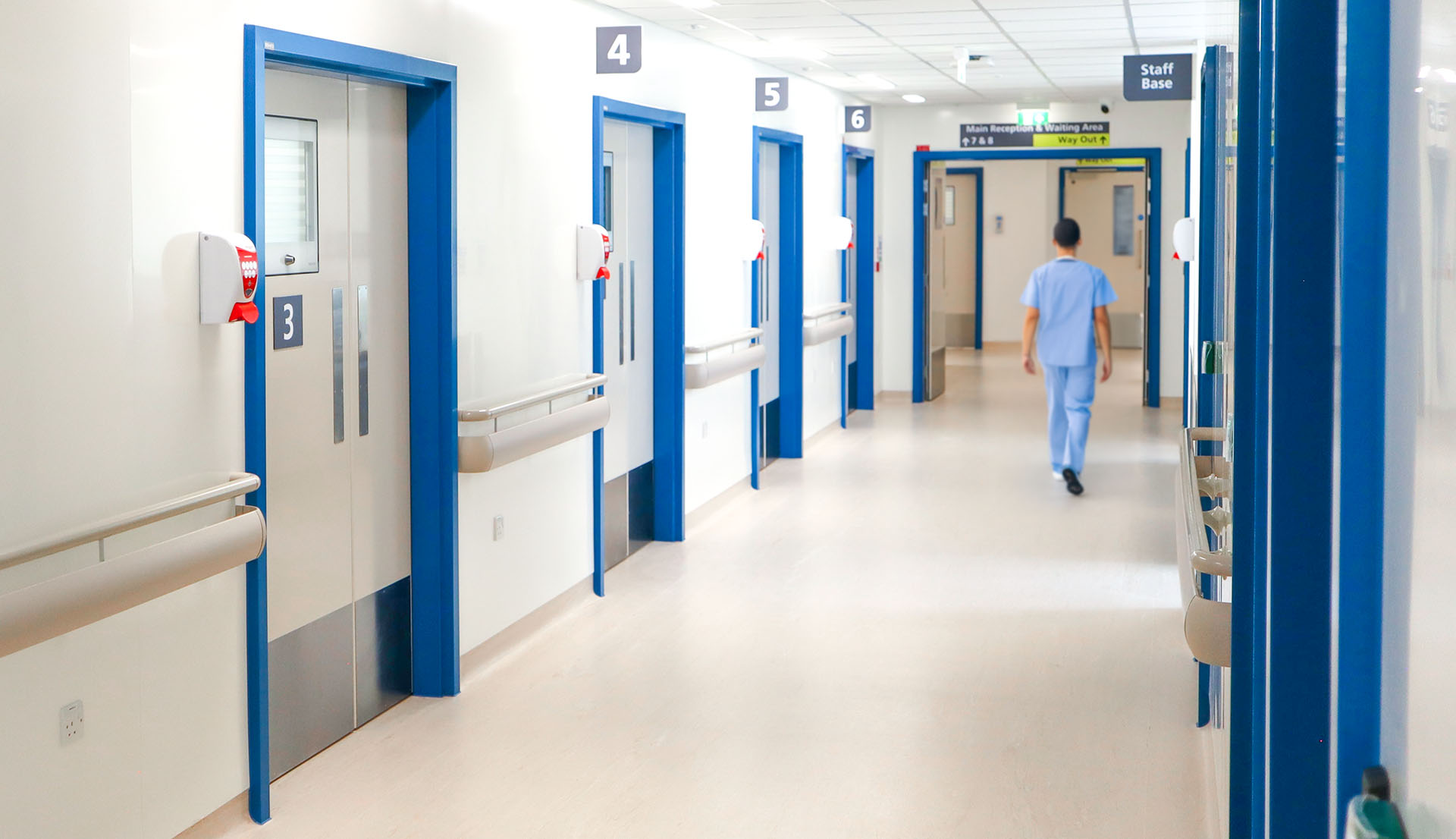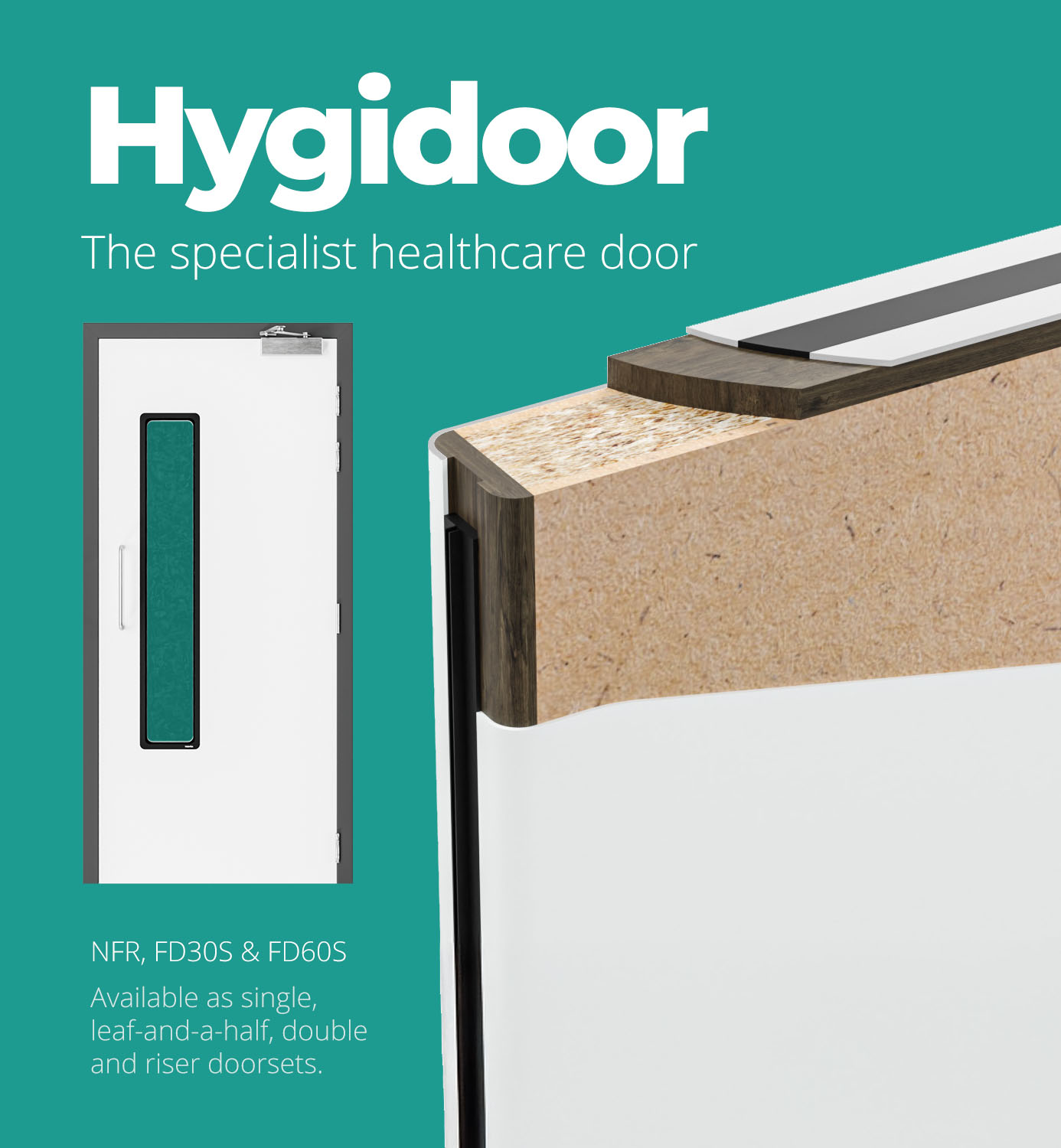Compliance in healthcare interiors with Giles Clarke

Ensuring compliance in healthcare interiors is a crucial aspect of creating safe, functional, and efficient healthcare environments. Adherence to healthcare regulations is essential for legal compliance, risk mitigation, and ensuring the safety of patients and staff. Giles Clarke, Project Consultant at Trovex, based in Scotland, collaborates closely with senior architects and design professionals, bringing expert oversight and experience to every project.
He is deeply committed to helping clients achieve healthcare interiors that not only meet but exceed the highest standards of safety, hygiene, and operational efficiency. From the initial consultation to the final delivery of products, Giles works closely with all stakeholders to ensure every element of the healthcare facility project supports the overarching goals of patient care, safety, and regulatory compliance.
“Understanding how a space needs to function is the foundation of every successful project.” Giles Clarke, Project Consultant, Trovex.
The foundation of any successful healthcare project lies in a thorough understanding of how a space must function. Giles Clarke emphasises that this understanding is essential to creating spaces that are not only aesthetically pleasing but also fully compliant with the rigorous demands of healthcare environments. Whether it’s patient rooms, clinical areas, or public spaces within a healthcare setting, the design process must prioritise patient safety, infection control, and the unique operational needs of healthcare settings. Thoughtful design also plays a crucial role in enhancing the quality of life for patients, supporting their well-being throughout treatment and recovery. Well-designed, compliant spaces further ensure the ease of navigation and use for patients, staff, and visitors.
From consultation to delivery
For Giles, the design process begins with an in-depth consultation, which he regards as one of the most critical stages of any healthcare project. He explains, “Without that first conversation, we’re essentially driving blind.” This initial dialogue uncovers the client’s objectives, the intended function of the space, and any key requirements or restrictions they face. These might include infection control protocols, fire safety regulations, or specific clinical needs essential to the facility. It is crucial to consider the correct order of decisions during this process, such as planning, material selection, and stakeholder involvement, to ensure all requirements are addressed effectively.
Understanding these factors early enables the team to develop tailored solutions that align with compliance standards. Early consultation leads to better outcomes and more effective compliance. This approach not only ensures legal compliance but also helps prevent costly revisions later in the project. By focusing on these elements from the outset, Giles and his team can deliver compliant interiors that support patient care and operational efficiency.
There are several ways to achieve compliance and operational efficiency, including early stakeholder engagement, evidence-based design, and continuous review of regulatory updates.
Solving healthcare design and infection control challenges
Throughout his work, Giles frequently encounters recurring challenges in healthcare projects, particularly in relation to infection control. One common issue is the inconsistency in materials and products used within healthcare spaces, which can undermine efforts to maintain stringent hygiene standards. Giles notes, “There’s often a lack of continuity and consistency in the products used within healthcare spaces. That can create issues when trying to maintain stringent infection control standards.” Inconsistency also brings the risk of risking compliance with regulations and guidance, potentially compromising safety and quality.

Fire safety is another critical concern in healthcare interiors. Giles highlights the importance of integrating fire safety solutions seamlessly within the overall design. By manufacturing products, such as the Hygidoor system, in a controlled environment, Trovex reduces the complexity of on-site construction. This method ensures that fire-rated doorsets and internal windows meet all necessary compliance standards.
The value of early engagement with regulatory standards
The aim of early engagement is to ensure that all stakeholders work together from the outset to achieve compliance, safety, and efficiency in healthcare facility management. Giles stresses the importance of involving experts like Trovex at the earliest stages of a healthcare project. Early engagement in the design process allows for better coordination and the opportunity to unify different project elements. Systems and standards are already in place to ensure compliance throughout the project. Similarly, this approach aligns with other best practices in healthcare design, ensuring consistency with established guidelines.
Giles stresses the importance of involving experts like Trovex at the earliest stages of a healthcare project. Early engagement in the design process allows for better coordination and the opportunity to unify different project elements. Systems and standards are already in place to ensure compliance throughout the project. Similarly, this approach aligns with other best practices in healthcare design, ensuring consistency with established guidelines.
“The earlier we’re engaged, the more value we can bring,” Giles explains. Early involvement enables the team to identify opportunities for adaptable design and optimise the use of materials and systems. Early engagement also supports effective budgeting, helping manage costs and keep the project within financial targets. This approach not only enhances operational efficiency but also guarantees consistent results and a fully compliant healthcare environment.
Are you a facilities manager starting a healthcare refurbishment?
For facilities managers embarking on healthcare refurbishments or new projects, Giles recommends adopting a holistic perspective from the outset. Facilities managers often face increasing pressure to meet the demands of modern healthcare environments. “Take the time to understand all the stakeholders involved and the reasons behind key design and installation decisions,” he advises. This comprehensive understanding is vital to minimize risks and ensure that the final interiors support both the well-being of patients and the efficiency of healthcare staff.
Above all, the focus should remain on the end users - the patients and healthcare professionals who rely on these spaces daily. Creating a safe environment that promotes patient experience and supports clinical workflows is paramount to delivering compliant interiors that stand the test of time.
Do you want to learn more about how we can help optimise your healthcare space? Fill in the form below:



